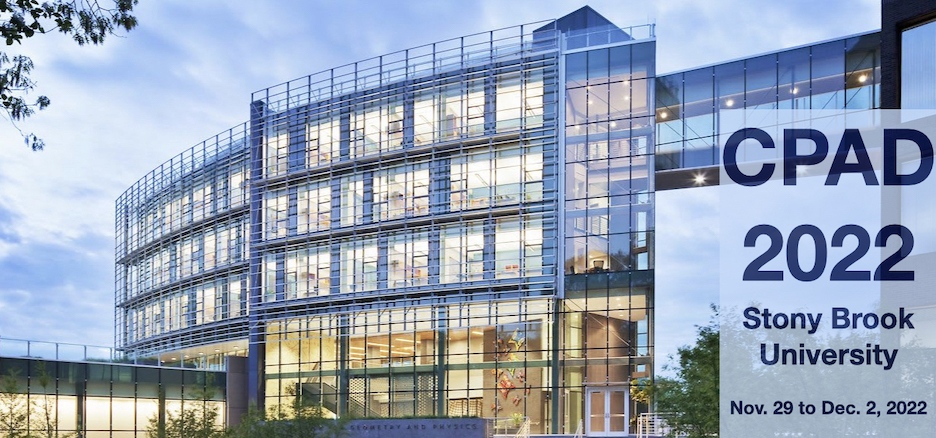Speaker
Description
The purely electron antineutrino source and high flux makes nuclear power reactors an
attractive place to set up a detector for reactor monitoring and searches for neutrino inter-
actions. One such interaction is Coherent Elastic Neutrino Nucleus Scattering (CEνNS),
which is one of the lowest energy processes predicted by the standard model, and has drawn
experimental interest in recent years. CEνNS has been detected by the COHERENT col-
laboration [1][2] at the spallation neutron source, but has yet to be detected from the low
energy antineutrinos from a nuclear reactor.
Liquid Xenon (LXe) detectors are capable of detecting sub-keV nuclear recoils [3], which
reactor antineutrinos are able to produce via CEνNS. In addition, LXe detectors can be
scaled up to large masses, making them capable of acquiring a large amount of statistics in
a short amount of time. We estimate that a LXe detector placed 25m away from a 3GW
power reactor can see O(100) events/100kg/day from CEνNS [4]. Dual phase LXe detec-
tors used for dark matter experiments detect events via prompt scintillation light produced
in the liquid, and ionization electrons which are converted to scintillation light by drifting
these electrons through a gas gap under high electric fields – called electroluminescence.
Such a dual-phase LXe detector was recently used to search for reactor neutrino CEvNS [5].
However, this design is known to have a large and long lasting single electron background
following a large ionization signal [6][7]. This background is possibly due to impurities within
the Xenon, but it may also be due to delayed extraction of electrons trapped at the liquid-
gas interface. As such, we are developing a single-phase liquid xenon detector,
capable of producing electroluminescence in liquid, named NUXE. Our goal is
to be sensitive to single electrons in order to detect CEνNS from a power reactor.
In this talk, we will present our progress with this detector development. First we will
discuss the physical motivations for building such a detector as outlined above. Next, we
will present our recent results from a prototype detector, as well as a model for liquid phase
electroluminescence. Finally, we will end with our future plan to upgrade our prototype,
with SiPMs and a better light collection efficiency.
References
[1] COHERENT Collaboration. First measurement of coherent elastic neutrino-nucleus scat-
tering on argon. Physical Review Letters, 126(1), jan 2021.
[2] COHERENT Collaboration. Measurement of the coherent elastic neutrino-nucleus scat-
tering cross section on CsI by COHERENT. Physical Review Letters, 129(8), aug 2022.
[3] Brian Lenardo, Jingke Xu, Sergey Pereverzev, Oluwatomi A. Akindele, Daniel Naim,
James Kingston, Adam Bernstein, Kareem Kazkaz, Mani Tripathi, Connor Awe, Long
Li, James Runge, Samuel Hedges, Peibo An, and Phil S. Barbeau. Measurement of the
ionization yield from nuclear recoils in liquid xenon between 0.3 – 6 kev with single-
ionization-electron sensitivity, 2019.
[4] Kaixuan Ni, Jianyang Qi, Evan Shockley, and Yuehuan Wei. Sensitivity of a liquid
xenon detector to neutrino–nucleus coherent scattering and neutrino magnetic moment
from reactor neutrinos. Universe, 7(3), 2021.
[5] D. Yu. Akimov, I. S. Alexandrov, R. R. Alyev, V. A. Belov, A. I. Bolozdynya, A. V.
Etenko, A. V. Galavanov, E. M. Glagovsky, Y. V. Gusakov, A. V. Khromov, S. M.
Kiselev, A. M. Konovalov, V. N. Kornoukhov, A. G. Kovalenko, E. S. Kozlova, A. V.
Kumpan, A. V. Lukyashin, A. V. Pinchuk, O. E. Razuvaeva, D. G. Rudik, A. V. Shakirov,
G. E. Simakov, V. V. Sosnovtsev, and A. A. Vasin. The red-100 experiment, 2022.
[6] A. Kopec, A.L. Baxter, M. Clark, R.F. Lang, S. Li, J. Qin, and R. Singh. Correlated
single- and few-electron backgrounds milliseconds after interactions in dual-phase liquid
xenon time projection chambers. Journal of Instrumentation, 16(07):P07014, jul 2021.
[7] LUX Collaboration. Investigation of background electron emission in the lux detector.
Phys. Rev. D, 102:092004, Nov 2020.

